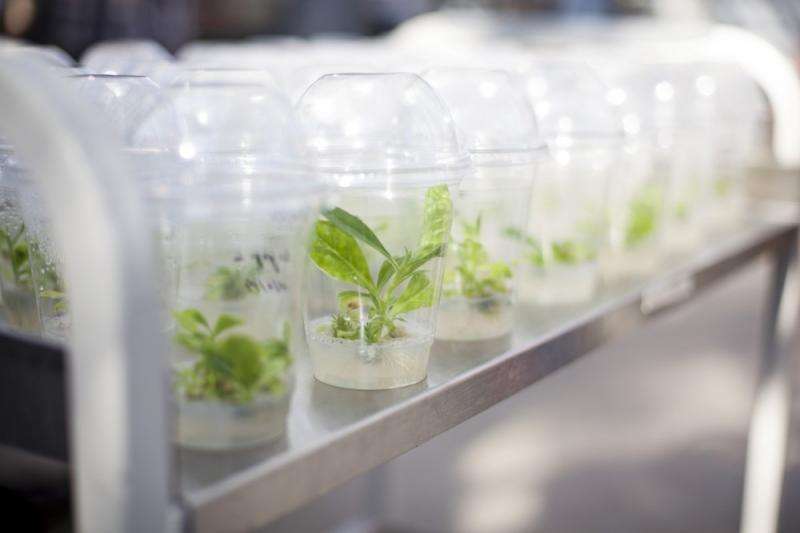One crop breeding cycle from starvation

In the race against world hunger, we're running out of time. By 2050, the global population will have grown and urbanized so much that we will need to produce 87 percent more of the four primary food crops - rice, wheat, soy, and maize - than we do today.
At the same time, the climate is projected to change over the next 30 years, with warmer temperatures and more carbon dioxide (CO2) in the atmosphere. Crop plants can adapt to change through evolution, but at a much slower rate than the changes we are causing in the atmosphere. Furthermore, the land available for growing crop plants is unlikely to expand to accommodate the predicted rise in demand. In fact, land suited to food crop production is being lost on a global scale.
"We have to start increasing production now, faster than we ever have. Any innovation we make today won't be ready to go into farmers' fields for at least 20 years, because we'll need time for testing, product development, and approval by government agencies. On that basis, 2050 is not so far off. That's why we say we're one crop breeding cycle away from starvation," says University of Illinois crop scientist Stephen P. Long.
Researchers at U of I, along with their large, multi-institution team, say a solution lies in genetically engineering photosynthetic mechanisms to take advantage of the projected rise in global temperatures and CO2, and to achieve much higher yields on the same amount of land.
"The rate of photosynthesis in crops like soy and rice is determined by two factors," Long explains. "One is the enzyme which traps the CO2: we call that rubisco. Under lower atmospheric CO2 levels and at high temperatures, rubisco can make a mistake and use oxygen instead of CO2. When it uses oxygen, it actually ends up releasing CO2 back into the atmosphere."
Under higher levels of CO2, such as those projected for future climates, rubisco becomes much more efficient and photosynthesis rates naturally increase as it makes fewer mistakes. The carbon fixed by rubisco is eventually turned into carbohydrates that the plant can use as an energy source for producing grains, fruits, and vegetative structures.
However, rising temperatures are projected to accompany increased CO2. Unfortunately, rubisco's increased efficiency under high CO2 begins to break down in hot climates. That's why project partners are looking to improve rubisco so that it will operate efficiently in both high temperature and high CO2 conditions.
"Our partners are looking at a wide range of rubiscos from different organisms to see whether they can find one that will make fewer of these mistakes in hot climates," Long says.
But the team is not stopping at improving rubisco.
Long adds, "The second factor that can limit photosynthesis is the rate at which everything else in the leaf regenerates the CO2-acceptor molecule, known as RuBP. As we go to higher CO2 levels, instead of being limited by rubisco, we're limited by this regeneration step. We're looking at ways to manipulate the speed of that regeneration."
The researchers developed mathematical models that showed how, by altering the way nitrogen is divided between parts of the photosynthetic apparatus, more carbohydrate could be made under conditions of higher temperature and CO2 without the crop requiring more nitrogen fertilizer.
The models were then taken for a test-run in the field. Using genetic engineering methods, the team tried to speed up the regeneration of RuBP in tobacco plants while subjecting them to high-CO2 environments. The proof of concept worked: photosynthesis rates and yield increased.
The group's next step will include tests on staple food crops in controlled environments and in field trials. Long stresses that this potential solution won't be ready for commercial roll-out for many years, but they won't give up.
"In the face of the extraordinary challenges ahead, we simply do not have the luxury to rule out the use of any technology that may hold promise to improve crop performance," he notes.
More information: Johannes Kromdijk et al. One crop breeding cycle from starvation? How engineering crop photosynthesis for rising CO and temperature could be one important route to alleviation , Proceedings of the Royal Society B: Biological Sciences (2016). DOI: 10.1098/rspb.2015.2578
Journal information: Proceedings of the Royal Society B
Provided by University of Illinois at Urbana-Champaign



















